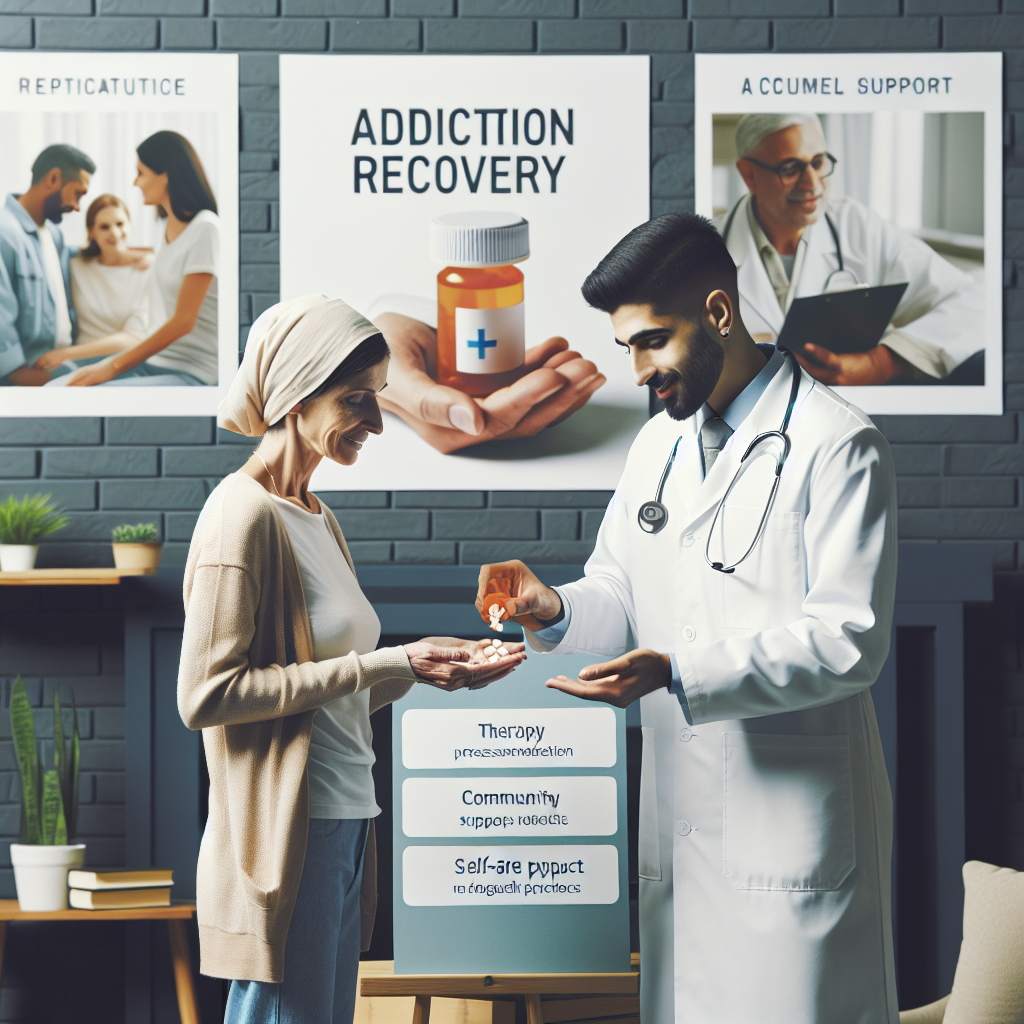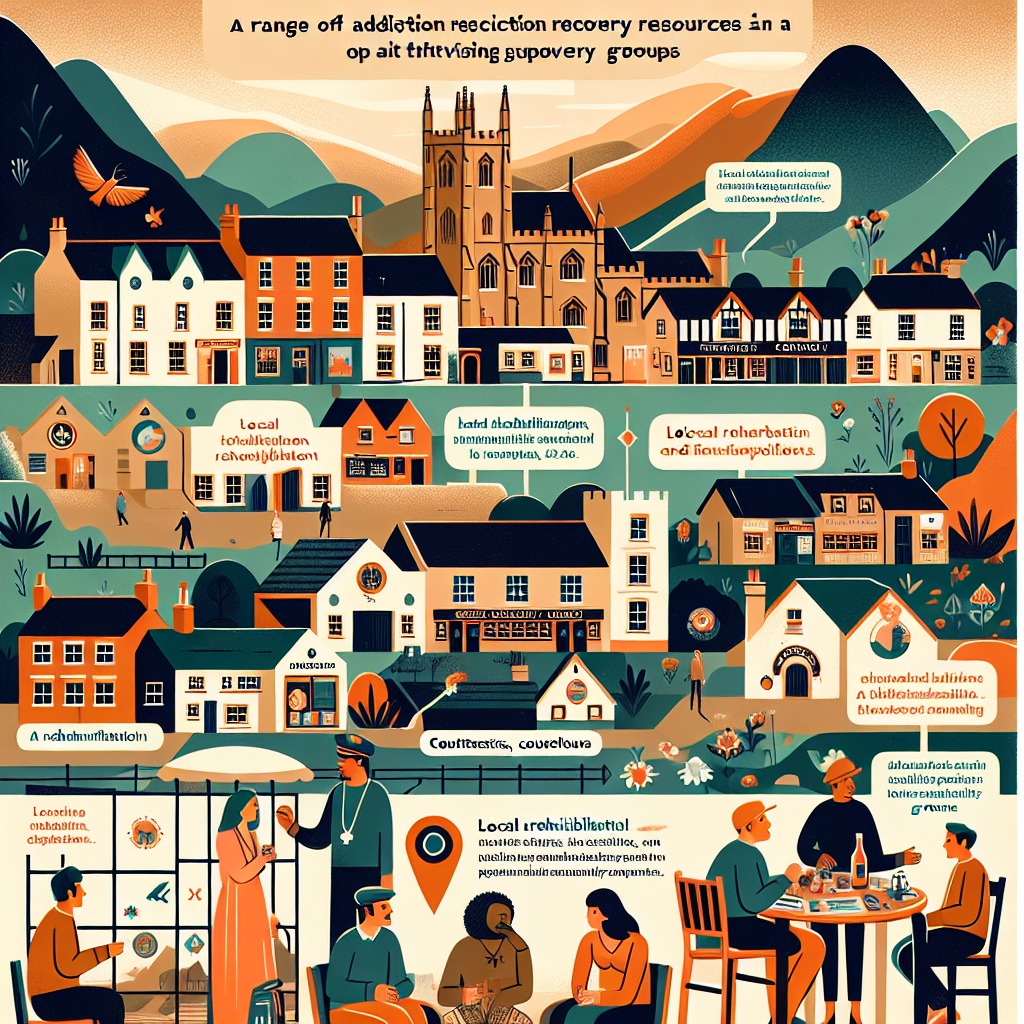-
Table of Contents

“Medication-Assisted Treatment: Bridging the Gap to Lasting Recovery.”
Introduction
Medication-assisted treatment (MAT) is a comprehensive approach employed by addiction recovery services to address substance use disorders, particularly opioid and alcohol dependencies. This method integrates FDA-approved medications with counseling and behavioral therapies to provide a holistic treatment plan. The medications used in MAT, such as methadone, buprenorphine, and naltrexone, work by normalizing brain chemistry, blocking the euphoric effects of alcohol and opioids, relieving physiological cravings, and stabilizing body functions without the negative effects of the abused drug. By combining these pharmacological interventions with psychological support, MAT aims to improve patient survival, increase retention in treatment, decrease illicit opiate use and other criminal activity among people with substance use disorders, and improve birth outcomes among women who have substance use disorders and are pregnant. This integrated approach not only addresses the physical aspects of addiction but also supports the emotional and psychological recovery of individuals, thereby enhancing their overall quality of life and facilitating long-term recovery.
The Role of Medication-Assisted Treatment in Addiction Recovery Services
Medication-assisted treatment (MAT) has emerged as a cornerstone in the realm of addiction recovery services, offering a beacon of hope for individuals grappling with substance use disorders. This approach integrates the use of FDA-approved medications with counseling and behavioral therapies, creating a comprehensive treatment plan that addresses both the physiological and psychological aspects of addiction. By doing so, MAT not only alleviates withdrawal symptoms and reduces cravings but also fosters long-term recovery and improves overall quality of life.
One of the primary ways MAT supports addiction recovery is by stabilizing brain chemistry. Substances like opioids and alcohol can significantly alter the brain’s reward system, making it challenging for individuals to experience pleasure from everyday activities. Medications such as methadone, buprenorphine, and naltrexone work by normalizing brain function, thereby reducing the euphoric effects of the abused substance and mitigating withdrawal symptoms. This stabilization allows individuals to focus on the therapeutic aspects of their recovery without the constant distraction of cravings and discomfort.
In addition to stabilizing brain chemistry, MAT plays a crucial role in reducing the risk of relapse. The journey to recovery is often fraught with triggers and stressors that can lead to a return to substance use. Medications like disulfiram, which is used for alcohol dependence, create an adverse reaction when alcohol is consumed, thereby deterring individuals from drinking. Similarly, naltrexone blocks the euphoric effects of opioids, making relapse less appealing. By providing a pharmacological safety net, MAT empowers individuals to maintain their sobriety and build resilience against potential setbacks.
Moreover, MAT enhances the effectiveness of counseling and behavioral therapies, which are integral components of addiction recovery services. The combination of medication and therapy creates a synergistic effect, where the benefits of each are amplified. For instance, as medications alleviate the physical symptoms of addiction, individuals are better able to engage in cognitive-behavioral therapy (CBT), motivational interviewing, and other therapeutic modalities. These therapies help individuals develop coping strategies, address underlying psychological issues, and rebuild their lives in a supportive environment.
Furthermore, MAT is instrumental in addressing the stigma associated with addiction. By framing addiction as a medical condition that can be treated with medication, it challenges the misconception that addiction is solely a moral failing or a lack of willpower. This shift in perspective encourages more individuals to seek help and fosters a more compassionate and understanding approach to addiction recovery. It also underscores the importance of a holistic treatment plan that considers the unique needs and circumstances of each individual.
In addition to its clinical benefits, MAT has a profound impact on public health and safety. By reducing the incidence of overdose and the transmission of infectious diseases such as HIV and hepatitis C, MAT contributes to healthier communities. Programs that incorporate MAT have been shown to decrease criminal activity and improve social functioning, further highlighting its value as a comprehensive solution to the multifaceted challenges of addiction.
In conclusion, medication-assisted treatment is a vital component of addiction recovery services, offering a multifaceted approach that addresses the complex interplay of biological, psychological, and social factors in addiction. Through the use of medications that stabilize brain chemistry, reduce the risk of relapse, and enhance the effectiveness of therapy, MAT provides individuals with the tools they need to achieve and sustain recovery. By embracing this holistic and compassionate approach, we can inspire hope and healing for those affected by addiction, paving the way for healthier and more fulfilling lives.
Benefits and Challenges of Medication-Assisted Treatment in Addiction Recovery
Medication-assisted treatment (MAT) has emerged as a pivotal component in the landscape of addiction recovery services, offering a blend of pharmacological and therapeutic interventions to support individuals on their journey to sobriety. This approach integrates medications approved by the Food and Drug Administration (FDA) with counseling and behavioral therapies, creating a comprehensive treatment plan that addresses both the physiological and psychological aspects of addiction. The benefits of MAT are manifold, yet it also presents certain challenges that must be navigated to ensure its efficacy.
One of the primary benefits of MAT is its ability to reduce withdrawal symptoms and cravings, which are often significant barriers to recovery. Medications such as methadone, buprenorphine, and naltrexone have been shown to stabilize brain chemistry, block the euphoric effects of opioids, and normalize body functions without the negative effects of the abused drug. This stabilization allows individuals to focus on the therapeutic aspects of their recovery, such as counseling and support groups, without the constant distraction of physical discomfort and intense cravings. Consequently, MAT can significantly improve retention rates in treatment programs, as individuals are more likely to stay engaged when their withdrawal symptoms are managed effectively.
Moreover, MAT has been associated with a reduction in the risk of overdose. By providing a controlled dose of medication, MAT helps to prevent the dangerous cycle of relapse and overdose that is common among individuals with opioid use disorder. This is particularly important given the current opioid epidemic, where the risk of fatal overdose is alarmingly high. Additionally, MAT can improve overall health outcomes by reducing the transmission of infectious diseases such as HIV and hepatitis C, which are often spread through needle sharing among individuals with substance use disorders.
However, despite its benefits, MAT is not without its challenges. One significant challenge is the stigma associated with using medications in addiction treatment. Some individuals and even healthcare providers view MAT as merely substituting one addiction for another, rather than recognizing it as a legitimate and effective treatment strategy. This stigma can deter individuals from seeking MAT or adhering to their treatment plan, thereby undermining its potential benefits. Education and advocacy are crucial in changing these perceptions and promoting a more informed understanding of MAT.
Another challenge is ensuring access to MAT, particularly in underserved or rural areas where healthcare resources may be limited. The availability of MAT can be constrained by regulatory barriers, limited funding, and a shortage of trained healthcare providers. Addressing these barriers requires concerted efforts at the policy level to expand access to MAT and integrate it more fully into the broader healthcare system.
Furthermore, while MAT can be highly effective, it is not a one-size-fits-all solution. The success of MAT depends on a personalized approach that considers the unique needs and circumstances of each individual. This includes careful monitoring and adjustment of medication dosages, as well as the integration of comprehensive counseling and support services. A holistic approach that addresses the underlying causes of addiction, such as trauma, mental health disorders, and social determinants of health, is essential for achieving long-term recovery.
In conclusion, medication-assisted treatment offers a promising pathway to recovery for individuals struggling with addiction, providing critical support in managing withdrawal symptoms, reducing the risk of overdose, and improving overall health outcomes. However, to fully realize its potential, it is essential to address the challenges of stigma, access, and the need for personalized care. By embracing a holistic and compassionate approach, addiction recovery services can harness the benefits of MAT to inspire hope and facilitate lasting recovery for those in need.
Q&A
1. **Question:** What medications are commonly used in medication-assisted treatment (MAT) for opioid addiction?
**Answer:** Common medications used in MAT for opioid addiction include methadone, buprenorphine, and naltrexone.
2. **Question:** How does medication-assisted treatment (MAT) help individuals in addiction recovery?
**Answer:** MAT helps individuals in addiction recovery by reducing withdrawal symptoms and cravings, stabilizing brain chemistry, and blocking the euphoric effects of opioids, which supports long-term recovery and reduces the risk of relapse.
Conclusion
Medication-assisted treatment (MAT) is a comprehensive approach used in addiction recovery services that combines FDA-approved medications with counseling and behavioral therapies. This method aims to treat substance use disorders by reducing withdrawal symptoms, decreasing cravings, and normalizing brain chemistry. Medications such as methadone, buprenorphine, and naltrexone are commonly used to manage opioid addiction, while others like disulfiram, acamprosate, and naltrexone are used for alcohol dependence. MAT has been shown to improve patient survival, increase retention in treatment, and enhance the ability to gain and maintain employment. By addressing both the physical and psychological aspects of addiction, MAT provides a holistic framework that supports long-term recovery and reduces the risk of relapse.



